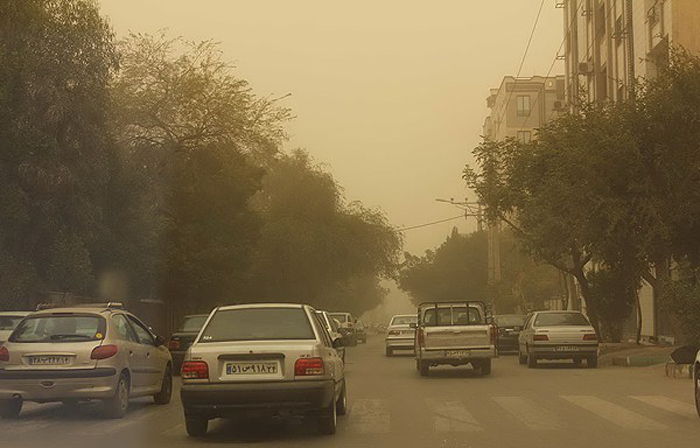Residents of Sistan-Baluchestan Province, especially those living in the vicinity of the devastated Hamoun Wetlands, are far from impressed with the statements of the Department of Environment’s chief about the wetlands during a press conference last week.
“Once the root of the problem was found, we took measures to replenish the Hamouns, such as lifting the central levees to allow water to flow into the lagoon,” Massoumeh Ebtekar said on August 8, the Persian daily Etemad reported.
“Last year, the wetlands were filled with water for seven months. Currently, even though parts of the Hamouns are still dry, water covers most of the wetlands.”
The timing of the statements could not have been worse: As Ebtekar was speaking to reporters, northern Sistan-Baluchestan was engulfed in dust storms, with particulate pollution levels 34 times above normal.
It did not take long for the residents of the province to respond. Distraught and feeling betrayed, they took to the social media to voice dismay over Ebtekar’s apparently deceptive statements.
Photos of people overcome with sadness and images of the dried wetlands were uploaded online, usually accompanied by a message imploring Ebtekar to visit the Hamouns again to witness the desolate landscape.
In fact, heavy rainfall in Afghanistan during spring makes rivers overflow and feed the wetlands, temporarily breathing life into the ecologically-rich lagoon.
But spring gives way to summer. The ensuing heat and relentless winds soon dry up the wetlands and send sand grains flying in every direction.
“You need to spend at least six months, from May to October, in the province to truly understand how dire the situation is; how 300,000 people are directly affected,” read a message posted by a Facebook page called “The Forgotten Sistan”.
Some resorted to satire: “Three-day dust storm tours! Experience above 40 degrees Celsius temperatures in dangerously polluted air accompanied by 100 km/h winds and enjoy the hospitality of the extremely patient people of Sistan-Baluchestan,” read a Facebook post that was frequently shared online.
The situation in the province quickly deteriorated after the press conference. In the following days, the provincial Disaster Mitigation and Management Department delivered food and other essential supplies to villages cut off from major cities due to unremitting dust storms and took measures to clear the roads. Emergency rooms quickly filled up with people suffering from respiratory difficulties.
The governorate of the province issued a formal apology to people for the dire situation. Some appreciated the gesture while others said apologizing will not solve the problem.
Dust storms began to let up gradually, however, and Ebtekar took to Instagram and Facebook to address people’s concerns.
“The department is committed to reviving every part of the Hamouns. However, global warming, drought and declining precipitation reduce the impact of our efforts to restore the lakes,” she said.
“That is why we are tirelessly trying to register the Hamouns as a biosephere reserve to help draw global attention to the Hamouns, secure more funding and ensure the wetlands’ water rights are upheld.”


